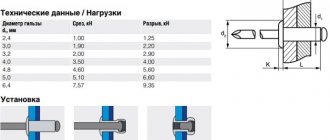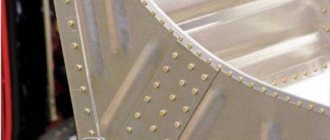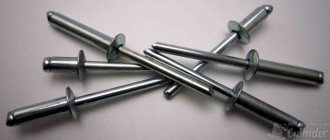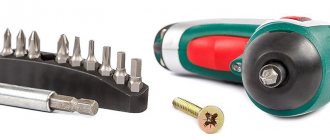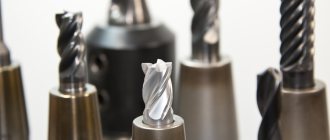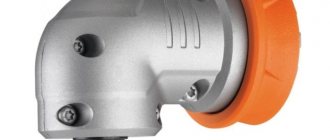Single-sided riveting is an effective way to permanently connect various materials. Single-sided riveting technology is widely used in various industries and is the formation of a permanent connection using blind rivet, which is installed on one side with a special tool - a riveter. You can buy rivets and a riveter in the Sigma online store t: (067) 259 23 23.
Main types of rivet hardware
All rivets are of two types - threaded and blind, both types of rivets are installed due to deformation that occurs from the pulling force of a special tool - a riveter.
Blind rivets
Blind rivets
consist of a rivet body with a side (flange) and a pull rod, which, when pulled out, deforms the tail part of the rivet body, forming a reverse head that tightens the connected elements. After reaching the maximum traction force, the rod breaks off in a special separation zone, forming a reliable, permanent connection.
Threaded rivets
Threaded rivets
are one-component, and are used to create a strong collapsible connection, while threaded rivets are placed on only one sheet (surface), and the second sheet or material is attracted to the first by screwing a bolt, screw, etc. into the thread.
Threaded rivets are much more commonly used to hold multiple parts together, allowing threads to be created on thin material where threads cannot be cut. At the same time, they do not have any special restrictions in use and provide reliable fixation of all structural elements using a collapsible threaded connection of parts.
Nut samples of a threaded rivet have a thread on the inside, and bolt samples have a thread on the outer (protruding) part.
APPLICATION OF RIVET CONNECTIONS
Riveted joints are used in structures that can withstand large vibration and repeated loads, with small thicknesses of the parts being connected, as well as for connecting parts made of non-weldable materials and those that do not allow welding due to warping or tempering of thermally shaped parts.
This joining method is most effective when applied to sheet and profile products. Moreover, in some cases this type of connection is the only possible one.
In modern industry, permanent connections of parts are usually made by welding, soldering, riveting, and gluing. Each of these processes has its own advantages and disadvantages. The most widely used method is welding. However, it is not always possible to connect dissimilar metals and coated metals by welding; during welding, warping of the parts being connected occurs, welding seams are sensitive to variable loads, and the thermal effect of the weld weakens the strength of the parts. These welding disadvantages are successfully overcome by the newest method of fastening materials - single-sided riveting.
ADVANTAGES OF SINGLE-SIDED RIVETING
- Low labor intensity.
- Easy to use and install.
- High quality connection.
- Easy maintenance.
- Possibility of installing prepared (painted or coated) parts and assemblies.
- Possibility of installation with access from only one side.
- High degree of automation.
AREAS OF USE
- Automotive industry and car service.
- Transport construction.
- Aircraft manufacturing.
- Climate control and ventilation.
- Furniture industry.
- Construction and installation of various structures and structures.
- Electrical industry and electronics.
- Food industry.
- Mechanical engineering.
- Production of consumer goods, etc.
Types of rivets
Before we figure out what types of rivets there are, let’s define that a rivet is a special fastener created to reduce production costs and make work easier. Special differences in hardware allow you to select the best option for specific fastenings.
Blind rivets open
The basic (standard) rivet is a fastener with a through hole. It is often confused with a hollow rivet, but the main difference is that a hollow rivet is installed with access from both sides, while a blind rivet can be installed on one side, much easier and faster. Speaking about areas of application, we can cite as an example the use of standard blind rivets when installing ventilated facades or assembling house structures made of metal frames. It all depends on the material and diameter of the rivet, but in any case the connection is quite strong and reliable. Installation features allow for minor differences in the diameter of the rivet and holes. The open type of blind rivets is the cheapest in the range.
Blind rivets closed
The main difference between closed blind rivets is the absence of a through hole; with their help, you can create a sealed structure. The body of the fastener makes it possible to “seal” the reverse side, creating a special head. Thanks to the tight fit, it becomes possible to install fasteners that prevent dust, dirt and moisture from entering the structure. The use of additional gaskets allows you to achieve a tight connection.
Closed rivets are suitable for the aviation and mechanical engineering industries.
Reinforced rivets
Reinforced rivets are also called monobolts. Necessary to create a super strong connection. Standard products are significantly inferior in terms of strength, tensile and shear forces. Another name is structural, since the created connection is not subject to vibration and has a wide range of uses. Reinforced models are used in industrial construction and mechanical engineering.
Flap rivets
By the name you can easily recognize the principle of operation of this rivet. During installation, the reverse side opens into “petals”, which, by bending, reduce the load at the attachment point, and in the case of very soft material, they can sink into it, strengthening the fixation, while almost not deforming it, but as if piercing it a little. Note that the head is not immersed in the material and remains visible. Flap rivets are needed for the installation of loose, delicate or soft materials. The head does not fall into soft material due to the fairly wide side and the small effort required for installation, which reduces the risk of cracks and deformation. An example is the connection of a smooth surface with a fibrous one, for example, wood, plastic or cellular polycarbonate.
Expansion rivets
Due to its special properties, the expansion rivet is used for the manufacture of furniture and decor; it allows connecting wooden and metal parts. Also suitable for fragile, loose and soft fabrics. The principle of operation is to form the reverse head in such a way that the load is distributed across the petals (partially divided into 3 parts). The main difference from the petal type is that the rivet is deformed and does not open completely.
Rivet nuts
Nut rivets are hardware that first has a flange, then a deformable part, and then a thread; the operating principle is similar to rivets, however, instead of a rod, there is an internal thread on the non-collapsible part.
To install a nut rivet, you need to drill a hole in the part to be fastened, screw the rivet onto the threaded part of the mandrel, which is inserted into the rivet gun and actually acts as a rod for the blind rivet, insert it into the prepared hole and retract the sleeve. The back part is deformed, forming a reliable connection with the inner surface; on the outside, the rivet is held by the side.
Multi-clamp rivets
Also types of blind rivets with an open body with a special design, which, unlike conventional blind rivets, provides multiple compression. This method of wedging the body provides high working loads to pull out.
Terminal rivets
Used for making contact connections, including creating an electrical circuit. How does a rivet work? The answer lies in the material: they are made of metals that conduct electric current (the rivet body is made of brass, and the rod is made of copper-plated steel). There are one- or two-terminal options. Terminal rivets are required to create a ground connection.
Plastic rivets
Rivet material may vary. Plastic hoods are made of polyamide, which means they provide a strong connection. In addition to the raw materials, they have a number of advantages:
- do not conduct electric current;
- not subject to corrosive effects;
- low cost.
Of course, plastic polyamide rivets are not suitable for fastening two metal plates. Used for plastic, fiberglass, cardboard structures associated with metal or other materials.
Cassette rivets
The newest type of rivets is cassette rivets. Today it is considered promising because the operator does not have to insert a single fastener each time. Cassette cartridges are presented in the form of a tape or rod for an entire magazine. A distinctive feature of the installation is that the rod does not break off, but is pulled, which significantly speeds up the installation process. One cassette contains up to 40 pieces. The special tool is not interrupted, but will automatically prepare the next batch. A bonus will be the ability to free up your second hand, which can be used to securely fix the knot.
Thus, it is impossible to single out a specific area of use of rivets in general. Each type is suitable for its own purposes, be it creating a children's playground or the largest business center. The only thing that is not in doubt is that rivets are a unique fastener that allows you to reduce installation time and cost.
The rod is an important structural unit
The next, very important structural element of a blind rivet is the rod. It acts as a rivet and can be made of strong steel, which is much stronger than the body. The end of the rod has a special head that acts as a rivet for the inserted end. When performing installation work, the rod is pulled out using a special pneumatic riveter, and if there are too many fasteners, you can get by with ordinary pliers. True, the latter case involves the use of a certain physical force.
The main advantage of the design of blind rivets is the possibility of one-sided installation, when access to the fastening is sufficient only from one side.
A more durable solution (threaded) has a characteristic thread inside the cylinder. In a classic blind rivet there is no such thread .
The threaded cylinder also has a screwed-in rod, which is not pulled out with force, but is carefully unscrewed. To strengthen the connection, a secure screw or bolt is placed inside. As a result, it is possible to create a kind of “closed” fastener, which is often called blind.
After determining the appropriate sizes and materials, as well as choosing the appropriate type of bead, you can begin to search for the specific type of rivet itself.
Rivets: purpose and materials of manufacture
After we have examined in detail all the types of options on the market, we can confidently highlight several aspects of the purpose of hardware:
- those places where it is impossible to carry out welding work;
- overheating and deformation of the material structure are undesirable;
- increasing vibration resistance properties;
- the need to create a connection of increased strength.
Materials used for manufacturing:
- aluminium-magnesium alloys*;
- bronze;
- copper;
- Monel (an alloy of copper and nickel);
- stainless steel A2 or A4;
- Cink Steel;
- polyamide.
* the difference is only in the magnesium content, the higher the percentage of magnesium, the stronger, the least durable and cheapest Al (Mg1%) and the most durable which is used in blind rivets and then, as a rule, for Al (Mg5%) rods;
In some cases, combinations of these materials are used, for example, the rod may be from one alloy, and the rivet from another. Galvanized steel and aluminum are often combined. In this case, the definition of “combined” rivet is appropriate.
The principle of selecting rivets is compatibility, or better repetition, of the material, in terms of mechanical and physical properties, from which the elements being connected are made.
Another important selection criterion is susceptibility to galvanic corrosion. It manifests itself at the junction of dissimilar metals under high humidity, for example, during rain. If you are not sure how to choose rivets for a riveter, then you can use a special table of electrochemical potential. The effect of moisture will be on the more electronegative material.
When choosing a material, the following features must be taken into account:
- Ideally, choose an electropositive material for the rivet itself, so that corrosion occurs on an element that can be easily replaced;
- check compatibility using the electrochemical potential table;
- use a dielectric barrier, such as a gasket.
When purchasing rivets, it is also worth considering the operating temperature of the finished product. The fastener material and product must be matched to ensure the same thermal expansion as the temperature rises and falls. Ignoring the selection rules may lead to premature rust or other damage.
In addition to the basic elements, there are coated rivets. Powder paint is used for this, and the shade corresponds to the RAL color chart.
Summing up
Blind rivets are indeed a very useful, reliable and high-quality connecting element, with which you can carry out a lot of installation work, achieving the most durable and good connection of all kinds of structures. Modern rivets meet all requirements and standards, so they prevent product deformation even under the most intense impacts. When choosing such a solution, it is important to set priorities correctly and give preference only to proven products. This will allow you to make a smart purchase and avoid mistakes.
Advantages and disadvantages
Today, rivets are considered a universal fastener that provides reliable fastening of sheet materials. In addition, hardware has a number of other advantages.
Advantages of metal rivets:
- the connection is resistant to strong mechanical loads, vibration and shock;
- the possibility of durable fastening in places where it is impossible to use threaded options or welding equipment;
- Blind and threaded rivets are easy to install;
- A wide choice of materials reduces the risk of corrosion.
Disadvantages of rivets:
- the need to purchase special equipment for installation - a riveter;
- if the diameter of the hole and the rivet are not matched, the strength of the connection is weakened;
- impossibility of end-to-end connection without the use of additional pads;
- noisy installation of options with a closing head.
At the same time, the disadvantages of metal rivets are not always a contradictory factor. The noise can be tolerated, and overlapping installation is one of many options for assembling the structure.
Design features of blind rivets
Regardless of the type, the rivet structure is the same; the main components of its design are:
- hollow tube with collar;
- all-metal rod.
The pipe is the body or sleeve of the hardware, and the side with the collar is the head. The bushing has a circular cross-section; its diameter determines the size of the fastener. The rod or core protrudes from the tube and is pulled through the sleeve during installation. Technical characteristics of hardware are regulated by GOST standards.
Rivet material
Depending on the material from which the rivets are made, the strength and reliability of the connection will differ. The most common options:
- aluminum. Such fasteners can reduce installation costs and, moreover, this material is fireproof (therefore, aluminum rivets are used in air ducts; when aluminum is struck by foreign objects or debris, a spark does not occur);
- stainless steel. In addition to reducing the risk of corrosion, they have high strength;
- galvanized hardware. Suitable for attaching sheet materials to other structures, for example, during the installation of gutters or metal fences.
Features of working with the tool
To quickly learn how to handle a riveter and easily perform a reliable connection of elements, it is enough to learn a simple procedure for working with it:
First of all, you need to select rivets of a suitable diameter. Most often, fasteners with a diameter of 2 to 4 mm are used. When working with large-diameter rivets, you will need a specialized tool, which is best suited to a pneumatic or pneumatic-hydraulic riveter. A hole is drilled in the working surface taking into account the outer diameter of the rivet. When using fasteners with a countersunk head, it is often necessary to first countersink the surface, which makes the rivet invisible. Before work, a rod with a thread of the required diameter should be installed in the rivet gun and a threaded rivet should be screwed onto it.
It is important to ensure that the rivet is securely fastened, otherwise it may come loose during installation. It is necessary to insert the fastener into the hole until it stops, making sure that its head is tightly adjacent to the surface of the material. The riveter is positioned strictly at right angles to the surface and begins to exert force on the handle. During operation, the rod will begin to move inside the tool, providing the necessary pressure to deform the fastener. After installing the rivet, you should unscrew the threaded rod from the socket and make sure that the rivet is seated in the hole correctly. This can be judged if there are no distortions and gaps, as well as thread deformation.
This can be judged if there are no distortions and gaps, as well as thread deformation.
How to remove a rivet
In the first case, you will need a drill with a drill slightly larger in diameter than the internal thread size. When installing the rivet, you need to monitor the process and promptly change the drill to a larger one. When the problem is solved, the fastener will be divided into two halves - the head and the inner part.
You can also remove incorrectly installed fasteners by grinding off the head. A drill will also help in solving this problem, and when the head is destroyed, all that remains is to knock the rivet out of the seat.
Installation nuances
Before installing the fastener, special attention should be paid to choosing its length. To correctly calculate this rivet parameter, you need to add the thickness of the material and the diameter of the rivet. For example, if the cross-section of the fastener is 4 mm and the thickness of the material is 2 mm, then to make a reliable connection it is recommended to use a rivet with a diameter of 6 mm
After installation, it will “sit” securely in the seat and will allow you to screw a bolt in if necessary.
For example, if the cross-section of the fastener is 4 mm and the thickness of the material is 2 mm, then to make a reliable connection it is recommended to use a rivet with a diameter of 6 mm. After installation, it will “sit” securely in the seat and will allow you to screw a bolt in if necessary.
It is no coincidence that the riveter is very popular, because it has such advantages as ease of use and practicality. Although home craftsmen very rarely share their impressions of the practical use of this tool in everyday conditions. In many construction stores, a riveter is a rarity, not to mention fasteners for it, which many are forced to order online.
https://youtube.com/watch?v=N7tjWpsqOc0
This tool has only recently become popular among the population. Most often it is used to perform reliable installation of license plates. It is also perfect for installing fences made of sheet materials, as well as mounting electricity metering devices on thin walls of panels. This installation method has surpassed in popularity even such a common type of fastening as welding, due to its reliability. And this is not surprising, since even under conditions of high loads, if the rivets begin to fail, it will not happen to all of them at the same time.
Diameter and length
Of course, if we are talking about the independent use of rivets at home, then turning to GOST standards will be unnecessary. It’s another matter if this fastener is used in production. Regulation of the size of blind rivets to create unbreakable connections is indicated in the standards:
- GOST R ISO 15974-2005 and GOST R ISO 15973-2005 - standards for blind rivets;
- GOST R ISO 15979-2017 - blind rivet standard steel/steel side;
- GOST R ISO 15977-2017 - blind rivet standard aluminum/steel flange;
- GOST R ISO 15980-2017 - blind rivet steel/steel;
- GOST R ISO 15981-2017 - blind rivet standard aluminum/aluminum side;
- GOST R ISO 15978-2017 - blind rivet aluminum/steel;
- GOST R ISO 14488-2005 – description of the standard for “blind” rivets.
How to choose a quality device
Why does the question of how to choose a riveter remain relevant? After all, despite the fact that the tool belongs to the manual category, it has a fairly high cost. To save money, many buyers decide to take a desperate step - they choose cheap models. As a result, the device fails very quickly, and it turns out that the money was wasted. You should also not buy expensive models, since it turns out that the tool will simply lie on a shelf in the garage most of the time. What to consider when choosing a manual riveter - there are the following nuances:
Device body material - do not buy plastic models. No matter how colorfully manufacturers and sellers describe them, such instruments are toys that are only suitable for children. You need to choose devices only from high-quality steel. Conscientious manufacturers indicate the type of steel used in the technical description. How much the tool weighs - a good thread riveter has the appropriate weight, which allows it to be used for connecting rivets with a diameter of 12-14 mm
Equipment - usually good and high-quality devices are sold complete with replaceable heads, as well as consumables
In addition, the devices are located in special plastic, metal or wooden cases, which simplifies not only their storage, but also transportation
The manufacturer is very important, since today different manufacturers with unknown reputations appear on the market. It is not recommended to tempt fate, so choose riveters from manufacturers such as Kraftool, Matrix, Gross, JTC, Stayer and others
This is interesting!
If you plan to use the tool frequently, then preference should be given to reinforced riveters.
They are more expensive than regular ones, but last longer and are designed specifically for long-term use. https://youtube.com/watch?v=LECRsPZ5oAA%3F
Drawing a conclusion about what types of manual riveters there are, it must be said that tie-type models are quite sufficient for home use. A threaded tool can also come in handy, but only if you plan to work with sheet steel. Proper storage and use will increase the service life of even a budget tool model.
Determining the length of a rivet with a broach
The length of the rivet with a broach can be determined using the following table, depending on the thickness of the materials being fastened (the manufacturer strongly does not recommend using rivets for riveting materials with a thickness less than the lower recommended limit and higher than the upper limit).
Threaded rivets
Threaded rivets, although they were invented almost simultaneously with broach rivets, became widespread only recently.
A threaded rivet is a hybrid of a hollow rivet and a nut, so the second name for such rivets is riveting nuts. In fact, there is no unity in the name - they are also called rivet nut, threaded rivet, rivet nut. This confusion with names is explained by the lack of an ISO or DIN standard for this type of fastener. The design feature of riveting nuts determines their dual purpose: with their help, you can either rivet sheet materials together or simply create threaded fastening points on thin-walled structural elements. The convenience of installing rivets is due to the absence of the need for access from the reverse side of the structure - the so-called “blind installation”. During installation, the already treated surface of the part, for example, with coating or painting, is not damaged.
According to the shape of the collar (head), riveting nuts are divided into:
- with a flat cylindrical collar (normal and reduced)
- with a hidden collar (normal and reduced)
According to their design, threaded rivets are divided into open - with a through hole, and blind - closed on one side.
According to the shape of the outer surface, threaded rivets are divided into:
- smooth
- corrugated
- hexagonal
- half-hexagonal
Installation, as in the case of tear-off (blow) rivets, is carried out using a specialized tool - pliers for riveting nuts - a riveter. We produce mechanical manual riveters and high-performance pneumatic riveters.




